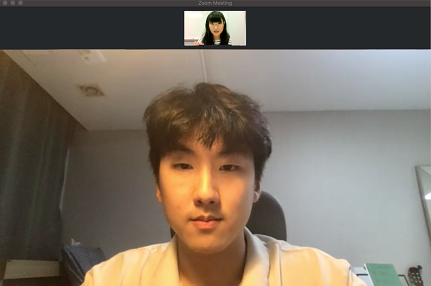
“Scientist” is a vague term. When we picture a scientist, we only have a basic image of a white gowned man or woman with goggles in a lab. But what exactly does a scientist or researcher do besides looking at tiny organisms through a microscope?
An interview with Dongeun Heo, postdoctoral researcher at Oregon health and science, gives a detailed account of a researcher as an occupation.She is a neuroscientist, so she also delineates the field of neuroscience and what kind of research is being done.
To understand the kind of research she is conducting, a rudimentary understanding of neuroscience is required. Neuroscience is the science of the brain. As she explains, the field of neuroscience could be separated into two major sub-fields: cognitive neuroscience and molecular or cellular neuroscience.
Cognitive neuroscience is a branch of neuroscience that deals with behaviours and mental processes within the brain, while molecular neuroscience is a branch focused on brain chemistry and cells. Ms. Heo is in the field of cellular neuroscience. So what kind of research does she do? She is a glial cell specialist. To give a brief description of a glial cell, it is a cell that facilitates the transmission of neural signals along the body by supporting the neurons.
According to Ms.Heo, it is a hot topic in the field of neuroscience. She is currently conducting an experiment to examine the functioning of glial cells within the process of ageing. The investigation is done by experimenting on laboratory rats.
She explains that she drills a hole in the skull of the rats, creating a transparent “window”, through which she can observe the neural activities of the rats.
Using brain fluorescent proteins found in jellyfish, neural activities display colours, which can be clearly observed. By observing these activities throughout the lifespan of the rats, she aims to uncover the secrets of the relationship between glial cells and the ageing. She described that her research is not an easy process.
When conducting an animal experiment like this, there are countless sources of error. She admits that out of 10 experiments, 70 percent of the experiments are likely to fail. The causes mainly consist of sudden deaths of animals and animal noncompliance.
Other scientists who study with larger animals, such as macaque monkeys, even have to persist 5 years of study and must meet the ethical criteria. Nevertheless, being a researcher at a university indeed has several merits.
Under the set budget given by her professor, she could indulge in shopping for scientific products; for example, she can spend $500 for an antibody solution. Individuality is also a huge merit, since she is navigating her own work and research.
Above all, she says the real pride of being a biology researcher is the notion that you are the pioneer, uncovering the secrets of your body sooner than anyone else. Sense of anticipation was definitely in her words. After publishing her research paper, she attends seminars and symposiums and delivers her findings.
This is her favourite part. She explains that professors abroad provide more opportunities for trainees and fellow researchers to share their findings themselves, instead of the professor himself or herself delivering the findings in the semina, which is most of the cases in South Korea.
She also talked about the working hours for a researcher. “There is no set time,” she says. The frequency of visits to the lab or average time in the lab varies on the type of experiment one does. For her, she visits several days per week to check on the animals and the progress of the experiment.
She adds that analysis of the results could be done at home unlike the actual stages of the experiment, so the actual time in the lab is highly variable. As a concluding question of the interview, I asked her about helpful tips for students who aspire to become researchers at universities.
She says being a researcher may not be easy as it seems, so it is vital to consult a lot - to professors, institutions, and other researchers for methods they might have developed. Furthermore, since there is no set working time, it is easy to overwork yourself and burn out, so understanding the sheer amount of work you are capable of is also essential.
Also, she advises not to be devastated when an experiment goes wrong, as it is a common event- in fact, failures are more likely successes. With a bit of humour, she also warned not to look at a laboratory rat as a cute creature, which will torment you in the future when you have to kill one.
It was an insightful conversation with Ms.Heo, who clarified what an actual scientist does in the labs. The people with white gowns were indeed the pioneers of our lives.

Chae-Ghang Jeong
Grade 11
North London Collegiate School Jeju

